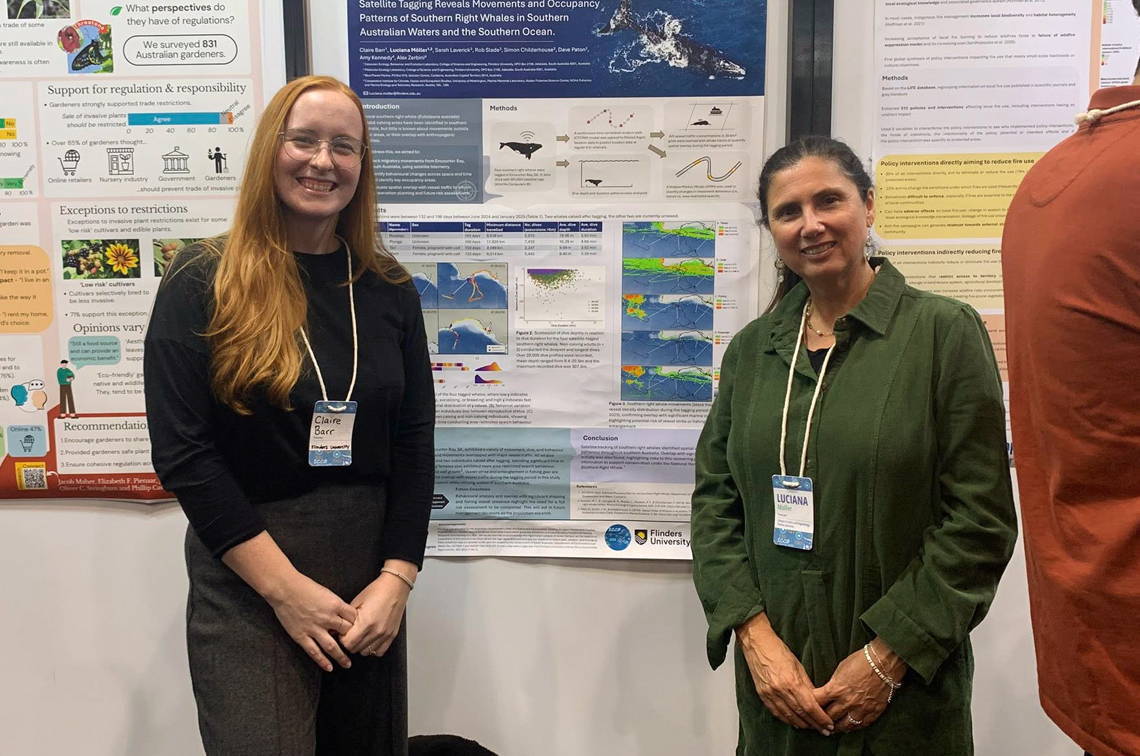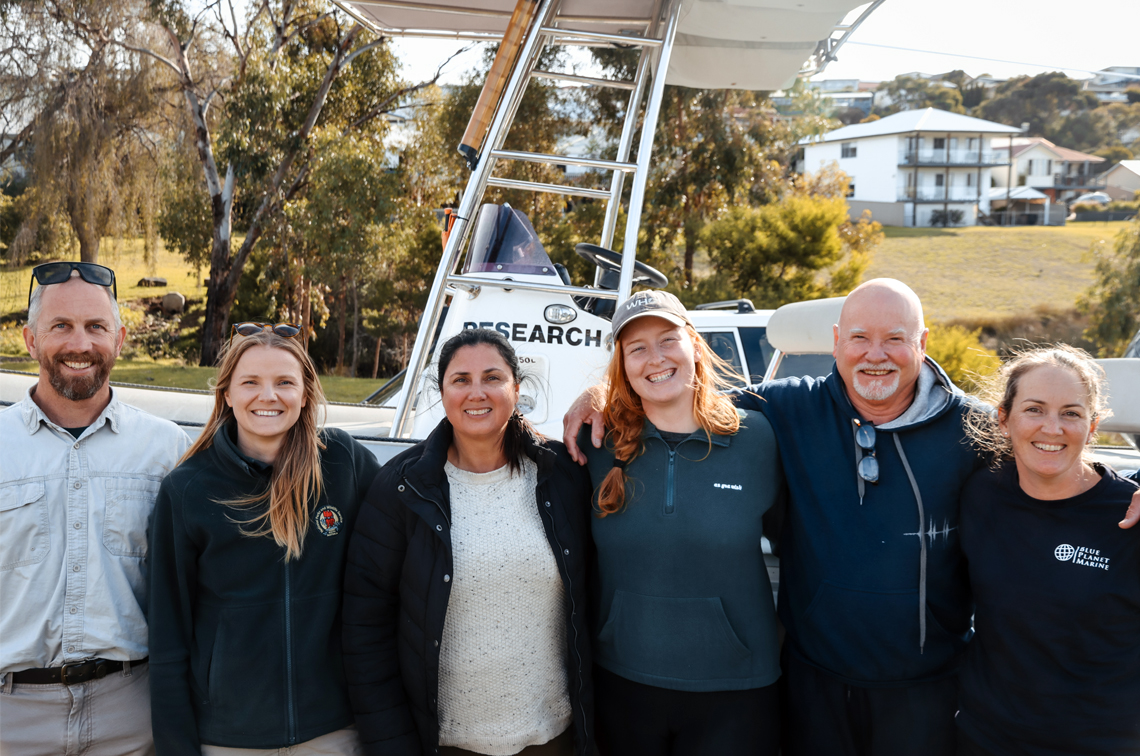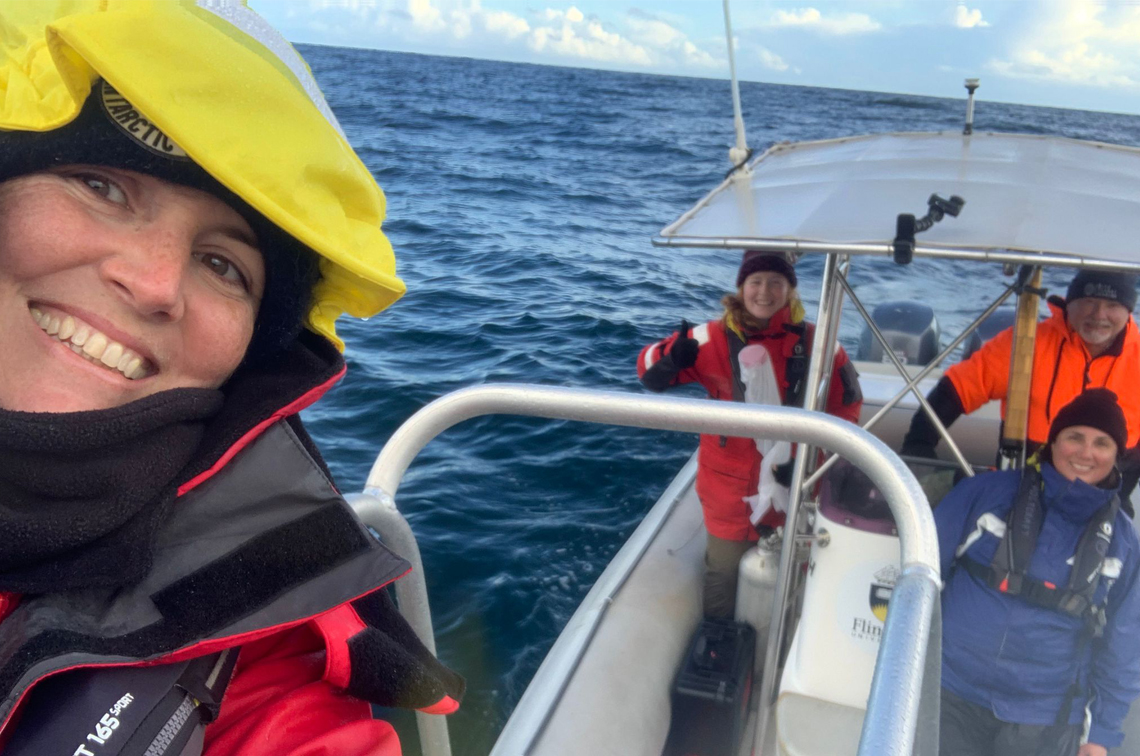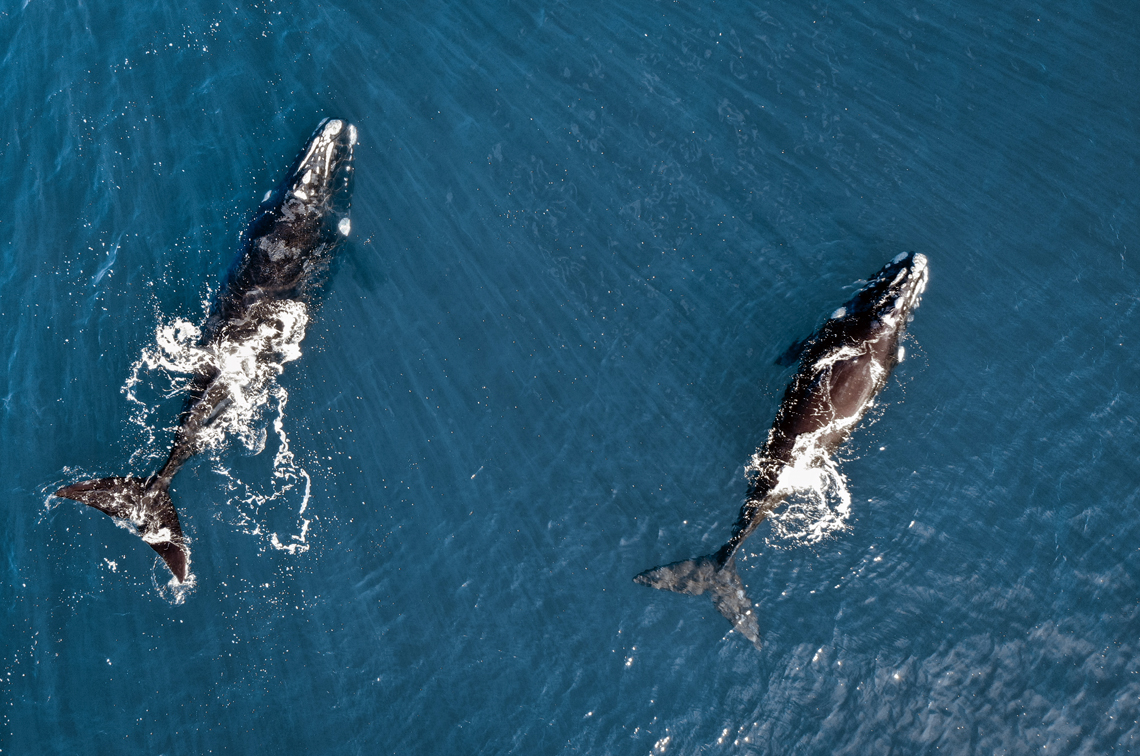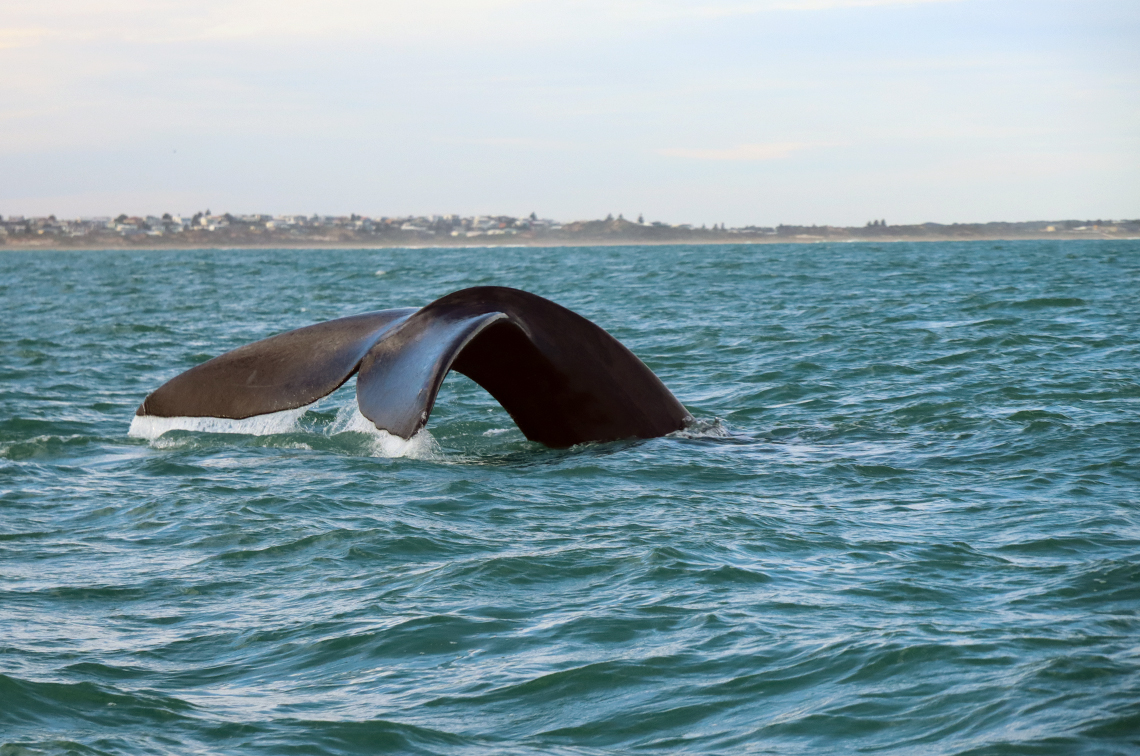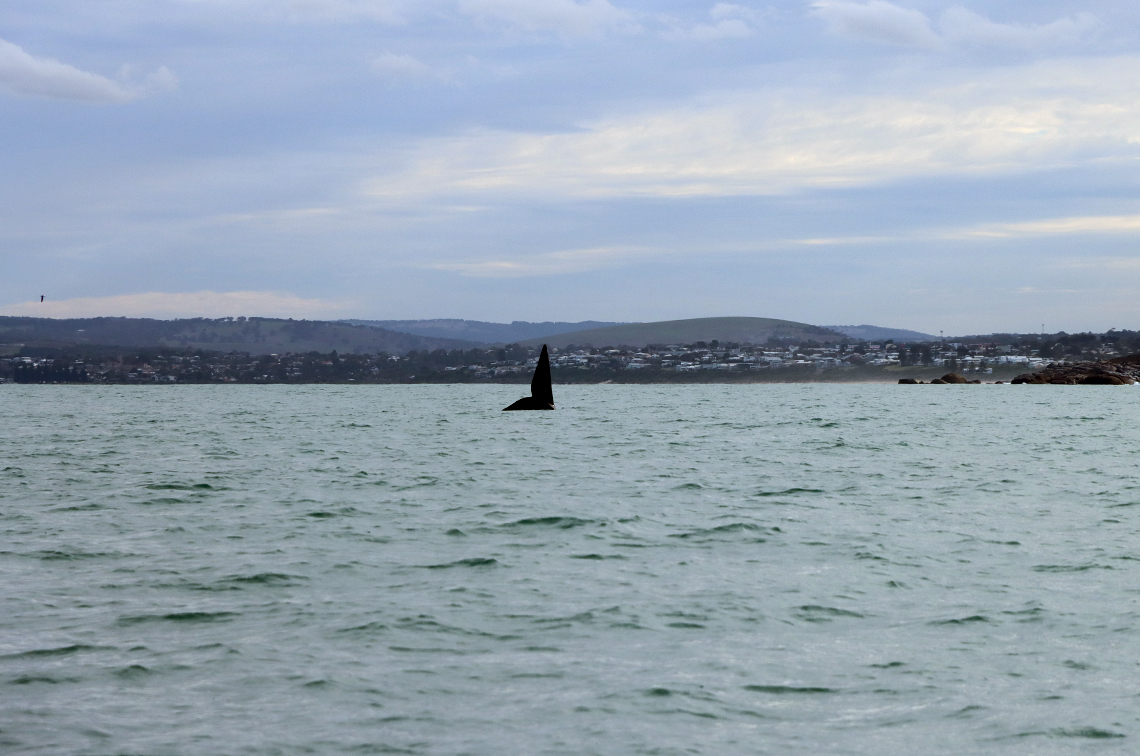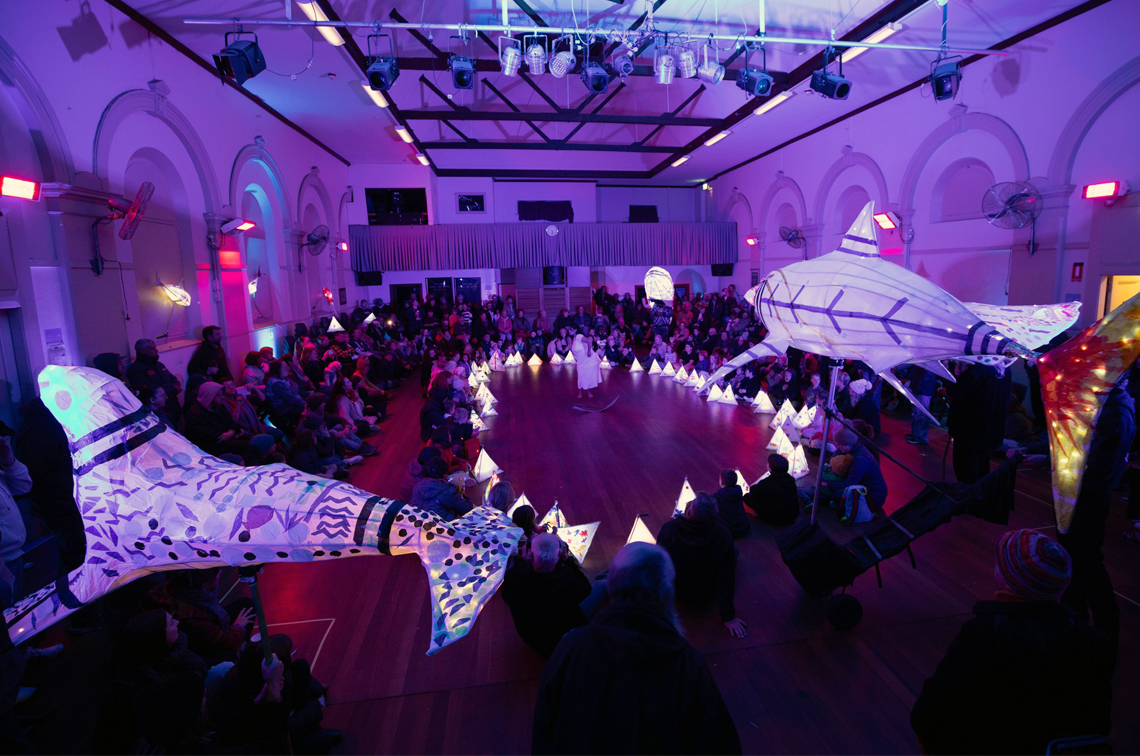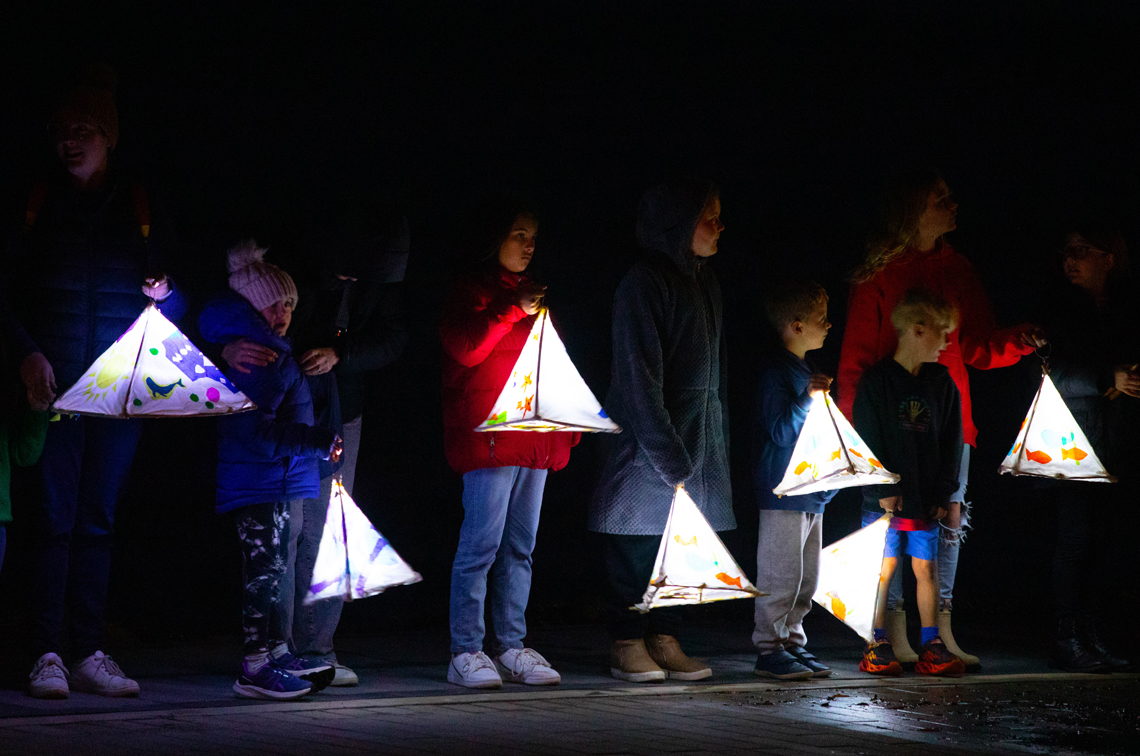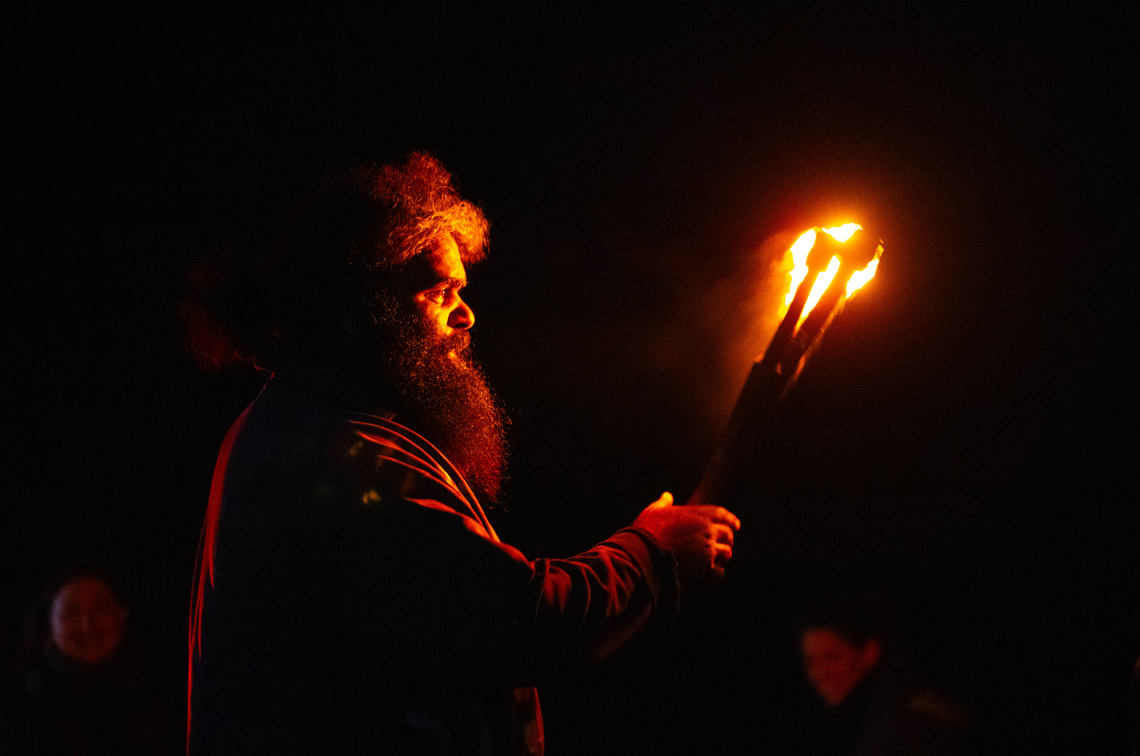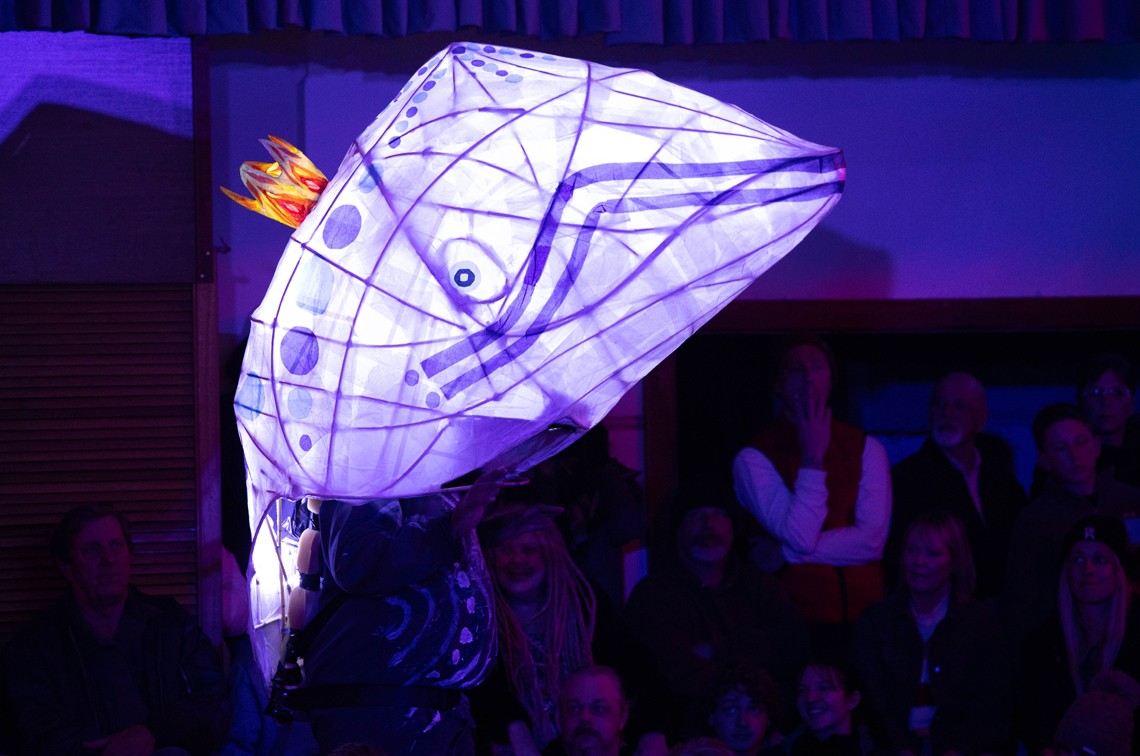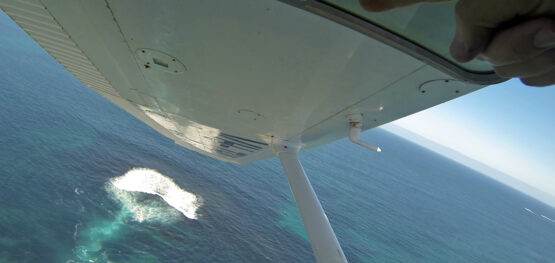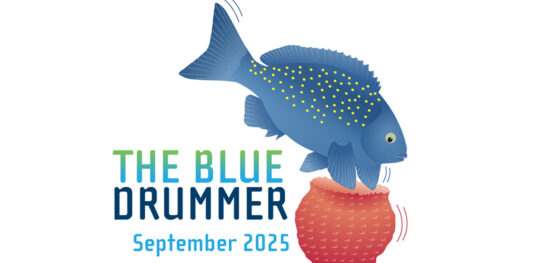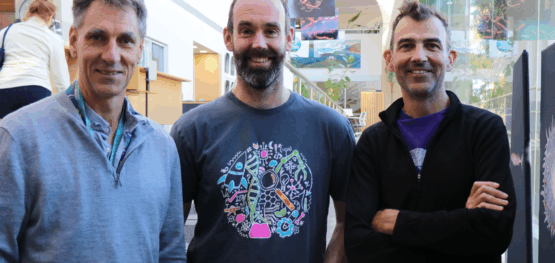Article
2 September 2025
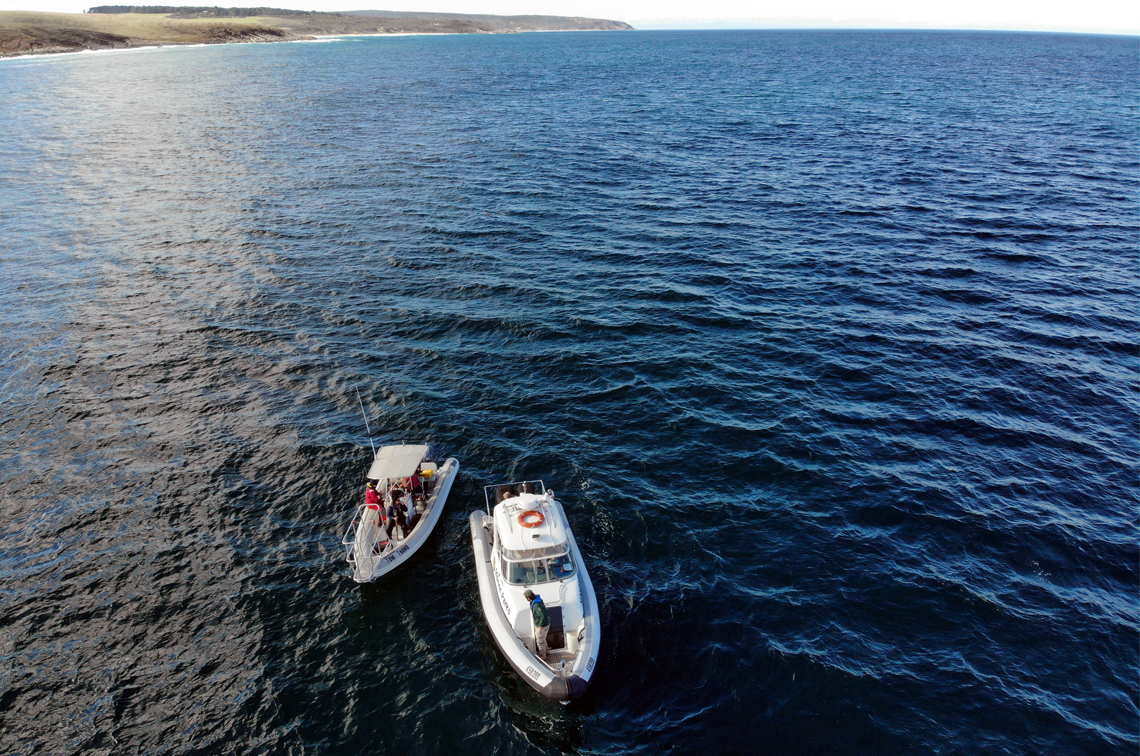
Four southern right whales tagged at Encounter Bay on South Australia’s Fleurieu Peninsula have given researchers a rare view of the whales’ migration pathways beyond this small coastal calving ground.
The whales were satellite-tagged in June 2024 as part of a hub project that is tracking southern right whale movement behaviours and locations, and the extent to which these areas overlap with vessel traffic.
“Several southern right whale coastal calving areas have been identified in southern Australia, but little is known about movements outside these areas, or how they overlap with human activities,” project leader, Associate Professor Luciana Möller of Finders University says.
“Learning more about how the whales use this region is important to conservation planning and risk assessment for this Endangered species. For example, Encounter Bay is approximately located at the boundary of Australia’s assumed two (eastern and western) populations, so is an important area to investigate movements between east and west calving areas.”
Associate Professor Luciana Möller, Finders University
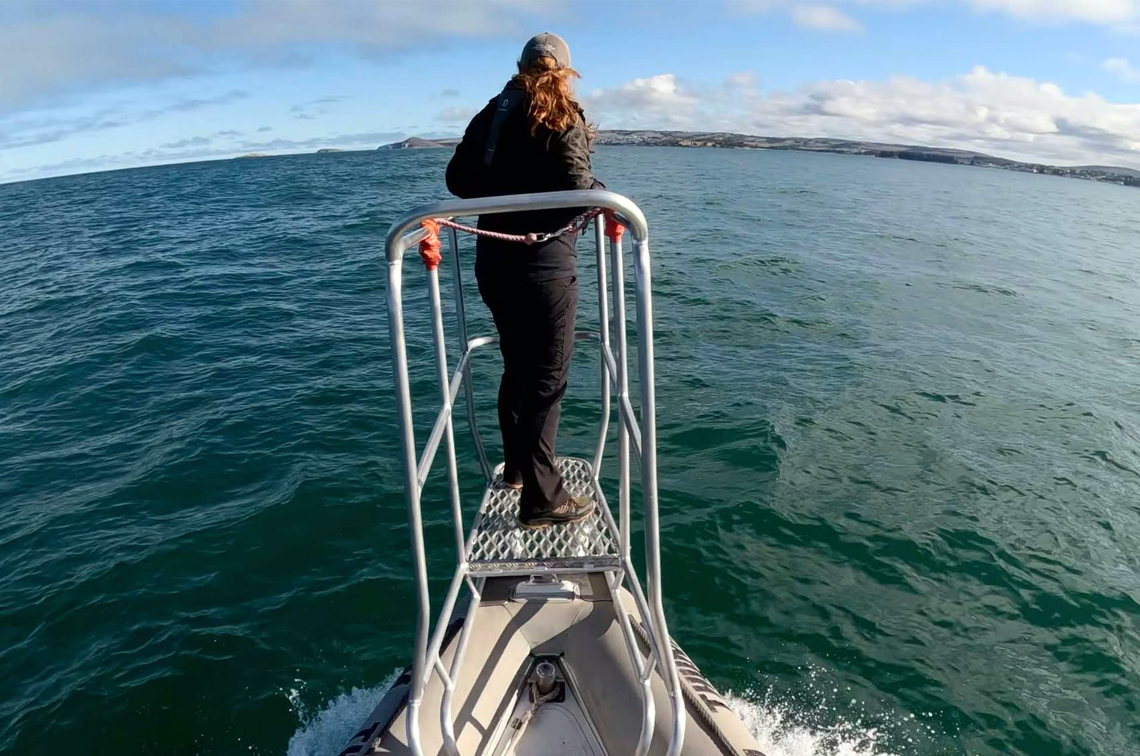
Tagging and data analysis
Southern right whale satellite tagging involves attaching a subcutaneous tag to the dorsal region of the whale from a small vessel, ensuring minimal disturbance to the animal. Once deployed, the tags transmit location data whenever the whale is at the surface long enough to connect to nearby satellites. The tags used in this study also recorded the depth and length of dives, which is useful for identifying behaviour patterns in particular areas, especially for mothers with calves.
“We can use the raw location data transmitted by the tags to model the whales’ movements at six-hourly interval throughout the life of the satellite tag,” Claire Barr, the PhD student working on the data says. “We can then loosely characterise the movement behaviours of each whale, seeing where they were doing area-restricted search behaviours (such as resting and milling), migratory movements, or an intermediate behaviour that could be associated with socialising, feeding, or mating.”
Movement and behaviour
The tagged southern right whales exhibited a variety of movement, dive, and behaviour patterns.
All four whales travelled in a westerly or south-westerly direction, supporting an anti-clockwise migration pattern along Australian’s southern coast. Two of the whales calved after tagging, and these females displayed more area-restricted movements, spending significant time in known coastal calving areas. This is likely to be resting or nursing behaviour to support the growth of their calves.
The two non-calving adult whales spent more time engaged in transit and migration, one of which spent nearly the entire time in offshore waters. They also displayed long periods of intermediate behaviour, which may have been an indication of socialising, foraging or mating.
These movement patterns were overlaid with automatic identification system (AIS) vessel traffic data to see the degree of overlap with vessel types such as cargo, tanker, and fishing vessels.
Overlaps with vessel traffic
“Knowing where the whales were going, we then investigated the risk they were facing from vessel presence,” Ms Barr says. “We found that the tracks of all four whales overlapped with major vessel traffic areas. The patterns of overlap highlighted different potential risks to whales, depending on vessel type and the intensity of traffic.”
The AIS data from the seven-month tagging period showed that nearly 30% of the areas used by the tagged whales were shared with cargo vessel traffic at some point. There were lesser levels of overlap with tankers, fishing, passenger and other vessels.
This overlap with vessel traffic increases the risk of ship strike and chronic disturbance from underwater noise, particularly in areas with medium to high vessel density. Even small amounts of interaction with active fishing vessels can pose the risk of entanglement in fishing gear. In roughly half of the areas shared by whales and tanker or cargo vessels, the whales were showing area-restricted search behaviour (resting or milling).
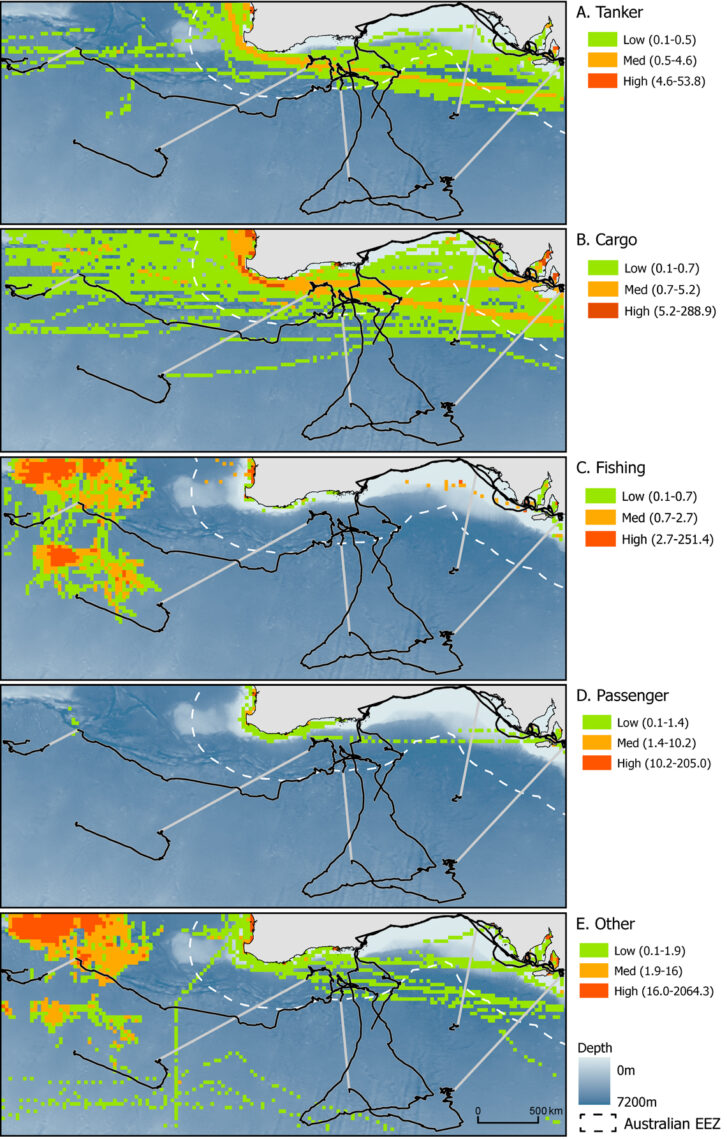
Mothers and calves at highest risk
The risk from large cargo and tanker vessels is reinforced by the dive data.
“We collected data on more than 20,000 dives,” Ms Barr says. “The bulk of the dives were less than 50 m deep and less than 20 minutes long, which is concerning as the drafts of large cargo ships are generally 12–17 metres.”
This is especially the case for the tagged calving females, which conducted much shorter and shallower dives than the non-calving adults, probably for the sake of their calves, which would also be at risk of collision.
“Vessel strike and entanglement in fishing gear are major threats to right whales, and the overlap with vessel traffic during the tagging period in this study raises concerns for the broader population while utilising waters of southern Australia,” Assoc. Prof. Möller says. “This highlights the need for full risk assessment to aid in future management decisions. We also found high-use offshore areas that warrant further investigation as possible feeding grounds.”
Both of these topics will be part of Ms Barr’s PhD research at Flinders University, under Assoc. Prof. Möller's supervision. Ms Barr aims to shed light on the movements of these whales and the multiple risks faced by this iconic Australian species.
Findings of this project will contribute to the National Recovery Plan for the Southern Right Whale (Eubalaena australis) 2024, and initiatives such as the World Wildlife Fund Protecting Blue Corridors initiative.
Sharing research findings
Flinders University researchers shared their preliminary findings at the Victor Harbour Winter Whale Fest, a community event held in June that celebrates the migration of whales to the Fleurieu Peninsula. Claire Barr and Bridgette O’Shannessy, a past honours student of Flinders University, talked about the southern right whale research and joined the Indigenous-led Kondoli Lantern Making Workshops and Lantern Parade. These events were sponsored by the hub and Flinders University in recognition of the cultural significance of whales to First Nations Peoples.
Claire Barr and Luciana Möller presented at the International Congress for Conservation Biology 2025 conference at Brisbane in June, and Ms Barr presented at the Australian Marine Sciences Association 2025 conference at Melbourne in July.
